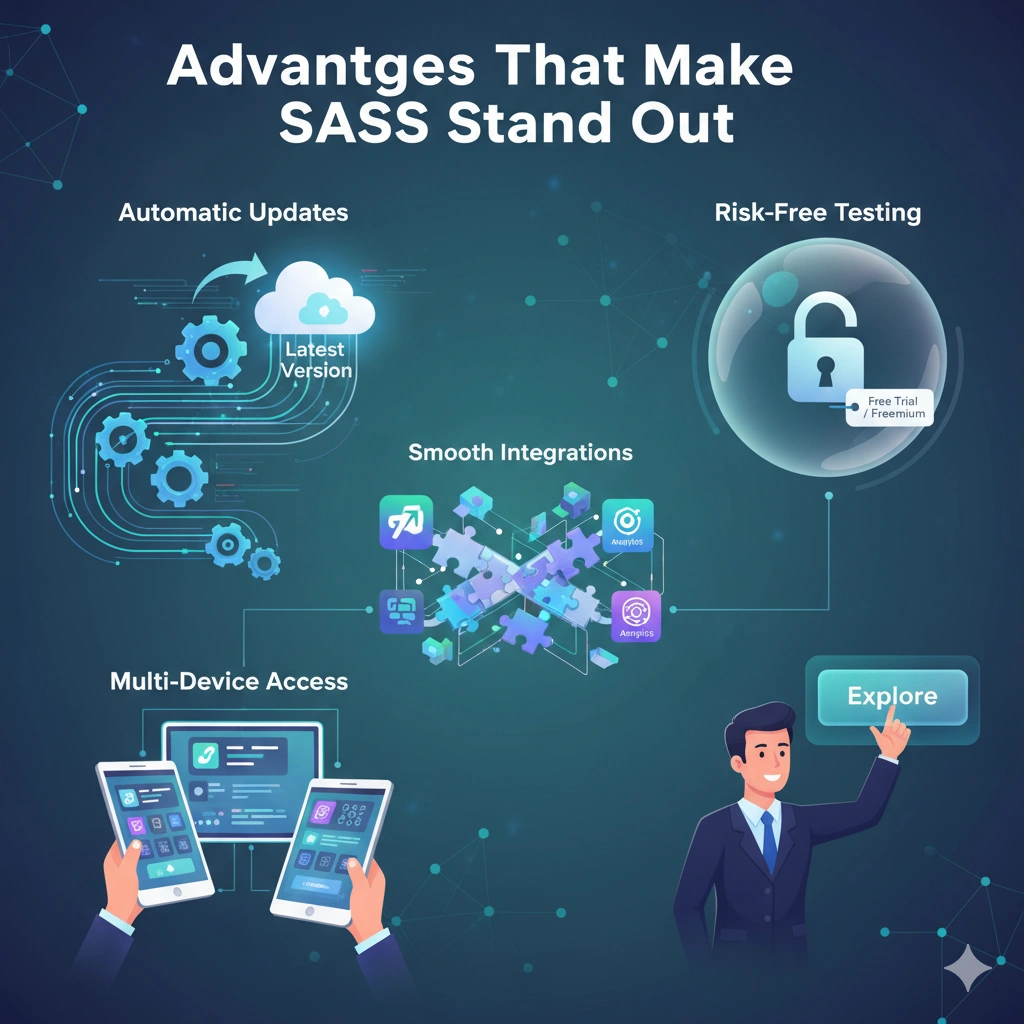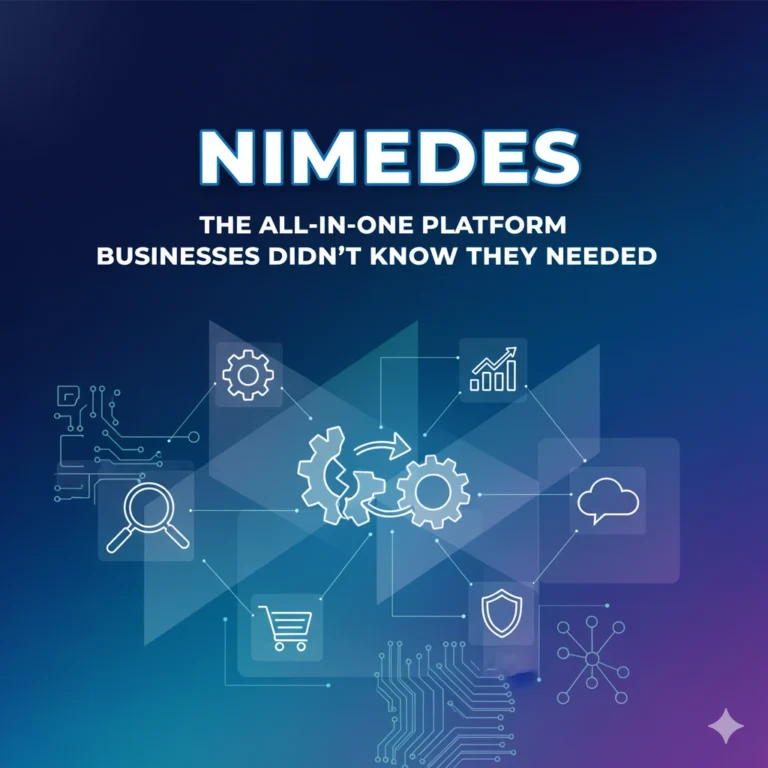Why SaaS is Transforming Modern Businesses: Key Features and Insights
If you’ve ever wondered why everyone seems to be talking about Software as a Service, you’re not alone. Software as a Service, or SaaS, has become a cornerstone of modern business technology—but what makes it so appealing? Let’s break it down in a way that’s easy to understand.
What Exactly Is SaaS?
Think as renting software instead of buying it. Instead of installing programs on your computer or server, SaaS applications live in the cloud. You access them through the internet and pay a subscription fee—monthly or yearly—without worrying about setup, hardware, or maintenance.
This approach not only saves money but also removes the headaches of managing IT infrastructure. It’s no wonder SaaS has skyrocketed in popularity worldwide.
Why Businesses Are Choosing SaaS
Businesses of all sizes are embracing Cloud-based software for several compelling reasons. Here’s why:
1. Cost-Effective and Flexible
- Pay only for what you use, with subscription pricing.
- No huge upfront fees or costly hardware investments.
- Upgrade or cancel as your business needs change.
2. Security You Can Count On
- Centralized, cloud-based data is safer than scattered local files.
- Automatic backups ensure you never lose critical information.
- Reduced risk from lost or stolen devices.
3. Saves Time and Simplifies Work
- Start using the software immediately—no long installations required.
- Streamlined workflows let your team focus on meaningful tasks.
- Minimal training needed thanks to intuitive interfaces.
4. Scales With Your Business
- Add or reduce resources as your company grows.
- No need for extra servers or manual upgrades.
5. Easy Accessibility
- Use SaaS on any device, from laptops to smartphones.
- Access customer support and helpful tutorials whenever you need them.
Advantages That Make SaaS Stand Out

- Automatic Updates: The provider handles updates, so you’re always on the latest version.
- Multi-Device Access: Work from anywhere—desktop, tablet, or mobile.
- Smooth Integrations: Connect multiple apps to streamline workflows.
- Risk-Free Testing: Many Cloud applications providers offer free trials or freemium plans.
Current Trends Shaping SaaS
Businesses aren’t adopting SaaS in a vacuum. Several tech trends are driving its growth:
- Cloud Computing: Global access to apps while saving costs.
- Artificial Intelligence: Automates tasks, enhances customer experiences, and provides predictive insights.
- Automation: Frees teams from repetitive tasks to focus on strategy.
- Mobility: Employees and customers can access apps from anywhere.
- App Integrations: Connecting tools improves efficiency and productivity.
Emerging trends include mobile-first SaaS apps, Data as a Service (DaaS) for simplified data management, and increased focus on cybersecurity due to BYOD (Bring Your Own Device) policies.
Potential Challenges of Software as a Service
No solution is perfect. Here are a few things to watch out for:
- Internet Dependence: Without stable connectivity, work may be interrupted.
- Hidden Fees: Some providers may charge setup, overage, or support fees.
- Overspending Risks: Without careful plan selection, costs can creep up.
SaaS vs. Traditional Software
Here’s a simple comparison to make things clear:
| Feature | Traditional Software | SaaS |
|---|---|---|
| Ownership | One-time purchase, fully yours | Subscription-based, provider manages everything |
| Installation | Manual setup on local hardware | Access instantly via web browser |
| Maintenance | You handle updates and security | Provider handles updates, backups, and hosting |
| Cost | High upfront investment | Flexible, pay-as-you-go model |
| Scalability | Requires new licenses or servers | Scale instantly with subscription tier |
In short, Software as a Service is about flexibility and convenience, while traditional software offers control and ownership.
Choosing the Right Software as a Service for Your Business
Picking a SaaS solution doesn’t have to be complicated. Here’s a roadmap:
- Define Your Needs: Identify your business goals and must-have features.
- Set a Budget: Balance essential features against optional ones.
- Compare Options: Evaluate pricing, usability, and features.
- Seek Feedback: Ask peers or experts about their experiences.
- Try Before You Buy: Demos and free trials are invaluable.
- Make Your Choice: Pick the solution that best fits your growth plans and budget.
A Quick Look at Cloud software History
Although “SaaS” feels modern, the idea goes back decades:
- 1960s–70s: Mainframes with terminals.
- 1990s–2000s: Internet made browser-based apps feasible. Salesforce (1999) and WebEx (1995) led the way.
- Cloud Era: Affordable, scalable, and reliable and became mainstream.
Today, it is everywhere—from CRM systems to project management tools—powered by cloud platforms, AI, and mobile-friendly designs.
SaaS Pricing Models
It is flexible by design. Companies like Salesforce offer tiered packages, so small businesses can access enterprise-grade tools without breaking the bank. You pay for what you need and scale as your business grows.
Should You Choose SaaS or Traditional Software?
Go for Traditional Software if:
- You want full control over the system.
- You have the budget for upfront costs.
- Offline functionality is crucial.
Opt for SaaS if:
- You need flexibility and easy scalability.
- You prefer a subscription model over heavy upfront fees.
- You want the provider to handle hosting, updates, and security.
Conclusion
There’s no one-size-fits-all answer. Traditional software provides ownership and control, but this program offers convenience, cost-efficiency, and adaptability. As businesses increasingly embrace cloud, AI, and mobile-first strategies, SaaS is likely to remain a driving force in digital transformation for years to come.
FAQs
Q1: What is SaaS?
A: SaaS (Software as a Service) is cloud-based software that businesses access online via subscription, eliminating installation and maintenance hassles.
Q2: Why should my business use SaaS?
A: This program saves costs, improves security, simplifies workflows, scales with growth, and is accessible from anywhere on any device.
Q3: How does SaaS differ from traditional software?
A: Traditional software is installed locally and owned outright, while this software is subscription-based, cloud-hosted, and managed by the provider.
Q4: Is SaaS secure for business data?
A: Yes. it providers use centralized cloud storage, encryption, backups, and regular updates to protect sensitive data.
Q5: Can SaaS scale as my business grows?
A: Absolutely. it allows you to upgrade or downgrade resources instantly without buying additional servers or licenses.







